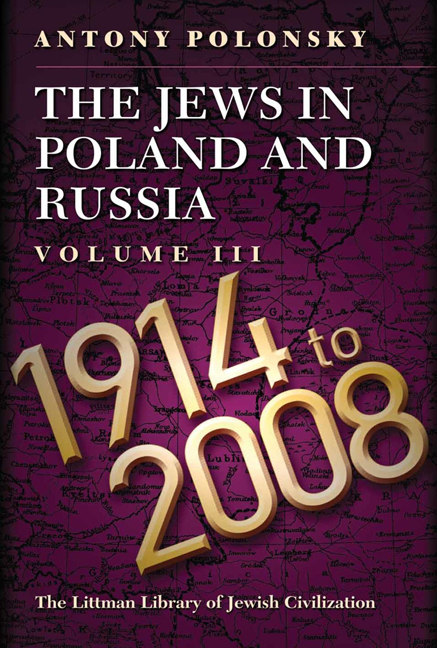Book contents
- Frontmatter
- Dedication
- Acknowledgements
- Contents
- List of Maps
- List of Tables
- Note on Transliteration
- Note on Place Names
- Maps
- General Introduction
- PART I FROM THE FIRST WORLD WAR TO THE SECOND
- PART II WAR AND GENOCIDE, 1939–1944
- PART III FROM THE END OF THE SECOND WORLD WAR TO THE COLLAPSE OF THE COMMUNIST SYSTEM
- EPILOGUE JEWS IN EASTERN EUROPE AND RUSSIA SINCE THE END OF COMMUNISM
- Conclusion
- Glossary
- Bibliography
- Index
8 - Towns, Shtetls, and Agricultural Settlements in the Soviet Union
- Frontmatter
- Dedication
- Acknowledgements
- Contents
- List of Maps
- List of Tables
- Note on Transliteration
- Note on Place Names
- Maps
- General Introduction
- PART I FROM THE FIRST WORLD WAR TO THE SECOND
- PART II WAR AND GENOCIDE, 1939–1944
- PART III FROM THE END OF THE SECOND WORLD WAR TO THE COLLAPSE OF THE COMMUNIST SYSTEM
- EPILOGUE JEWS IN EASTERN EUROPE AND RUSSIA SINCE THE END OF COMMUNISM
- Conclusion
- Glossary
- Bibliography
- Index
Summary
So here is a list of all those Who seems to have been there
Who have recently departed for Moscow: forever;
Four shopkeepers, a shoḥet, Oh yes—and the good old rabbi,
Eight girls who are going to college, He, too, has now traveled to Moscow
A few melameds and twelve youngstersAnd brought back all sorts of fine
Who went there in search of presents,
employment; And has carried on for a year
Fat Doba with all of her children, About the wonders of Moscow,
Who followed her husband, the tailor, Where life is so good for the Jews.
And Beilke, whose husband, a Gentile, … … .
Is at the Academy there, And everyone's eager to tell you
And Berele, the wheeler-dealer, How wonderful life is in Moscow.
IZI KHARIK, Mit layb un lebn, 1928The initial impact of the Bolshevik Revolution was to undermine drastically the livelihood of most Jews in the new revolutionary state. Jews lived for the most part in the areas that had been devastated by military operations between 1914 and 1921, and they were also heavily concentrated in occupations which the new regime regarded as harmful and undesirable. According to estimates by the Joint Distribution Committee, in the 1920s one-third of the Jews in the Soviet Union were classed as lishentsy (people deprived of rights because of their social origin). The result was widespread impoverishment. According to the German Jewish communist Otto Heller, who visited the Soviet Union several times in the 1920s,
The question on the agenda is sheer survival. Over one million … dispersed and uprooted by the Revolution, nearly an entire people must find another means of subsistence … In the Soviet Union the Jewish Issue is not a matter between Jews and non-Jews. Rather it concerns the subsistence of a mass of one million people … and how these Jews whose legacy impedes their employment can make the transition to such activities.
His assessment was confirmed by the Austrian Jewish writer Joseph Roth, who was in the Soviet Union in 1926.
- Type
- Chapter
- Information
- The Jews in Poland and RussiaVolume III: 1914 to 2008, pp. 274 - 298Publisher: Liverpool University PressPrint publication year: 2012



